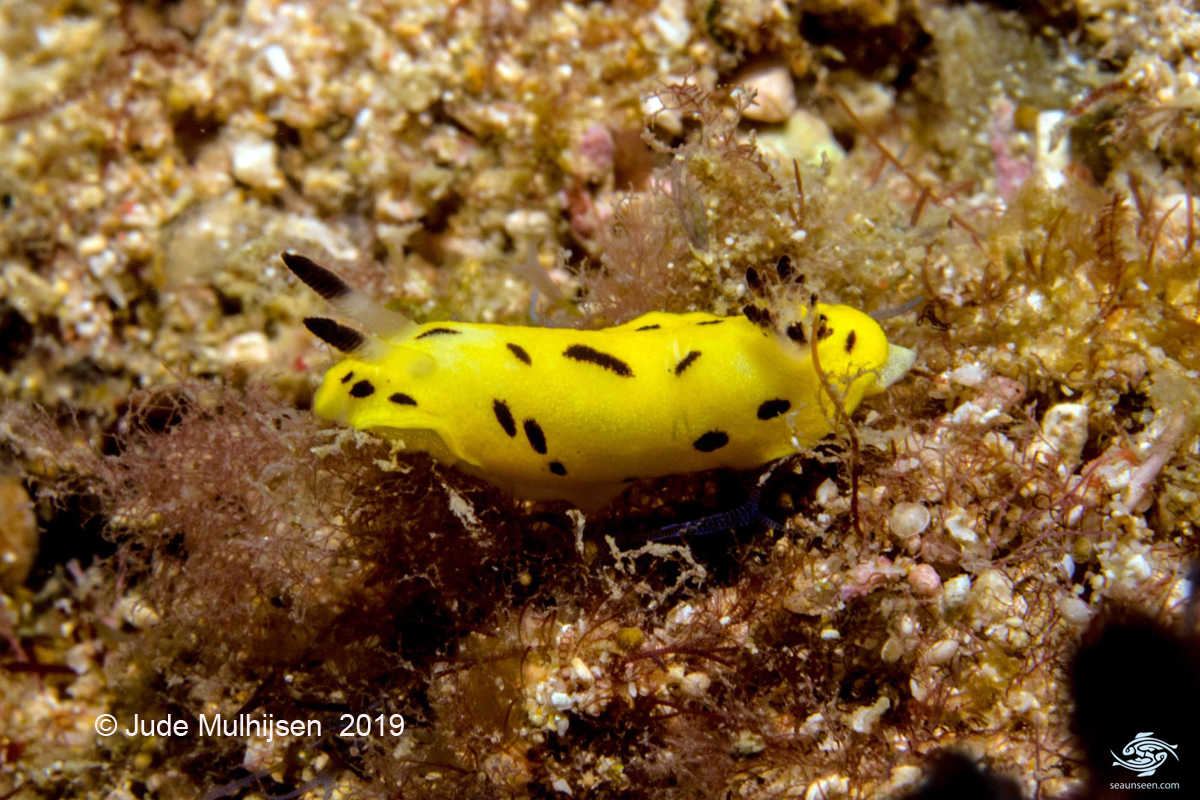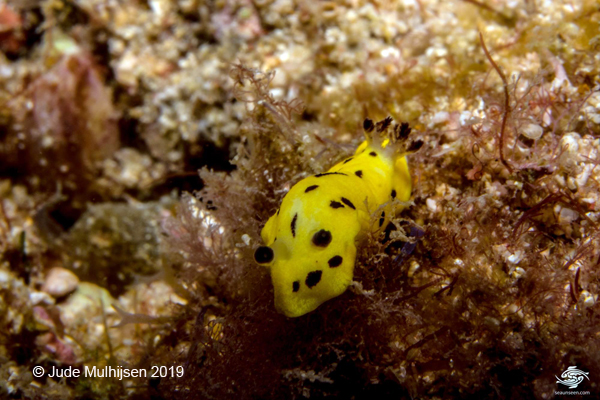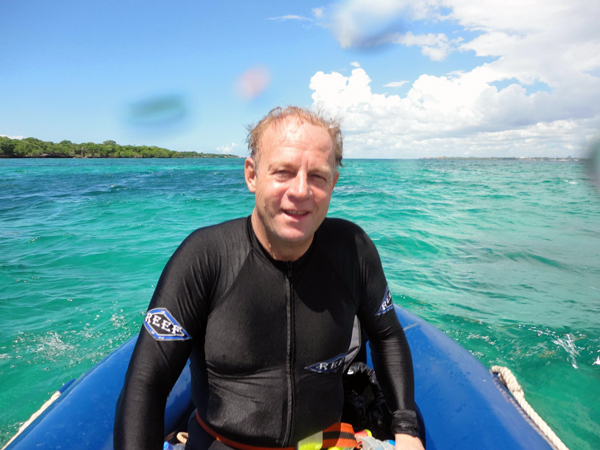 |
Paradoris sp. 8
Image courtesy of Alan SuttonBig T Reef off Dar es Salaam in Tanzania
 |
Paradoris sp. 8 (undescribed) Well after a little head scratching and a glass of wine - we have come to the conclusion that Alan's critter here is Paradoris sp. 8 in NSSI 2nd Ed. The only difference between the photo in the book and Alan's is that the brown lines on the dorsum are thicker on Alan's critter. This is likely just variation. The gill and rhinophores match perfectly. Although Angel (Valdes, 2001) looked at a number of deep water species from New Caledonia, the shallow water members of the genus really need a review, as we present eleven undescribed species in NSSI. Reference: Valdes A. 2001. Deep-sea cryptobranch dorid nudibranchs (Mollusca, Opisthobranchia) from the tropical West Pacific, with descriptions of two new genera and eighteen new species. Malacologia 43 (1-2): 237-311.
Sammamish, WA 98074 Sep. 2019 Send Dave email at davidwbehrens@gmail.com
|
Alan Sutton on location

I am originally from South Africa, I was born in Durban in 1959 but spent most of my early life and school in Pietermaritzburg. I started diving at an early age, when I was about 4. I saw an article in a magazine with pictures of Jacque Cousteau with a mask on. My father had a pair of old flying goggles and on the next family holiday to the sea I took them with and tried them out. Needless to say they leaked but I got a glimpse of a few fish that I can still remember today. I started free diving a lot in the holidays when I was about 12 years old, diving with my cousins who were into spear fishing and used to dive with the then South African Champions who taught me how to dive. I used to go along and watch. When I was at University in Durban where I studied Law and then Maritime Law, I dived a lot for crayfish, a hobby which I continued until I moved to Dar es Salaam in Tanzania in 1999. I had my first seawater fish tank when I was 16 and kept up the hobby until I moved to Tanzania. In Tanzania I have dived Pemba Island, Zanzibar, Mafia Island, Kilwa and Mtwara all of which have world class diving. I have dived the Kwa-Zulu Natal North and South coasts extensively as well as the Transkei coast and also done some diving in Dahab in Egypt. My favorite dive spot ever is the north east point of Mafia Island. Big drop offs with a strong current and a lot of life ranging from small stuff to large trevally's, dog tooth tuna, very large bass and a few sharks. I only switched across to Scuba about 7 years ago and have done about 700 dives maybe slightly more. I have Padi Rescue Diver and Deep dive qualifications. Usually I dive at least twice a week but sometimes up to six times a week if the conditions are good. I mainly dive with the Dar es Salaam Yacht Club , we have a dedicated dive boat and have 7 scheduled dives a week. We dive in the vicinity of Dar es Salaam either just north which has some good walls or just to the south which has some wrecks. I got into underwater photography initially in the late 90's but only in a serious way when the first waterproof Olympus came out in I think 2009 or so. From that I went onto the first Sony RX100 and then a Canon 7d Mk I and today I use a Canon 7D Mk II in an Ikelite housing with twin DS 161 strobes and I use two Big Blue VL 2500 video lights as focus lights. I find these stronger focus lights make a big difference in getting sharp images. I have several lenses but really only use my Canon 24-70 F4 L lens. There is no real all round lens but this seems to come the closest for me. Using one flat port I can run from 24-50 for more wide angle shots and with another flat port I can run from 50 to 70 and use the macro function on the lens which doesn't give true macro but is close enough. It is quite a sharp lens. If I do wide angle I use a Tokina Tokina AT-X DX 10-17mm with a dome port. For Video I use a Canon G30 in an Ikelite Housing with two Big Blue Lights, one 33000 Lumens and one 20 000 Lumen video light. |
The Paradoris sp.8 was found by a fellow diver and nudi enthusiast Jude Mulhijsen and photographed on the 31st August 2019 in approximately 16 meters on the top of Big T Reef off Dar es Salaam, which is a Seaward Reef about 4 km offshore dropping off to 50 meters . It was moving across the sand in a mixed rubble/sandy area with isolated coral outcrops.

Attention all you Sluggers, and you know who you are! The NSSI 2nd edition is now available in ebook PDF and book form . The hard back version will become available Nov. 1st. Both will cost $65 (individually). You will need to jump through a few hoops to get the electronic version as pdf distribution is protected by Adobe ID!! Please read the following to enable reading your electronic purchase! This new 2nd Edition is updated and reorganized, including 185 new species. Among other features, the new edition includes additional photographs of species, an identification key, and an up-to-date classification reflecting the latest evolutionary relationships. The Indo-Pacific represents the largest expanse of tropical ocean in the world, stretching from the Indian Ocean coast of southern Africa and the Red Sea to the central Pacific of the Hawaiian Islands, Easter Island and the Marquesas. This region supports the most diverse marine fauna of any place in the world for most groups of marine organisms. The nudibranchs and sea slugs are no exception to this rule; there are about 3,000 described species of these organisms in the world and at least 40% of these have been found exclusively in the Indo-Pacific tropics. This book illustrates 2,138 Indo-Pacific nudibranchs and sea slugs, including many undescribed species.
|

|
